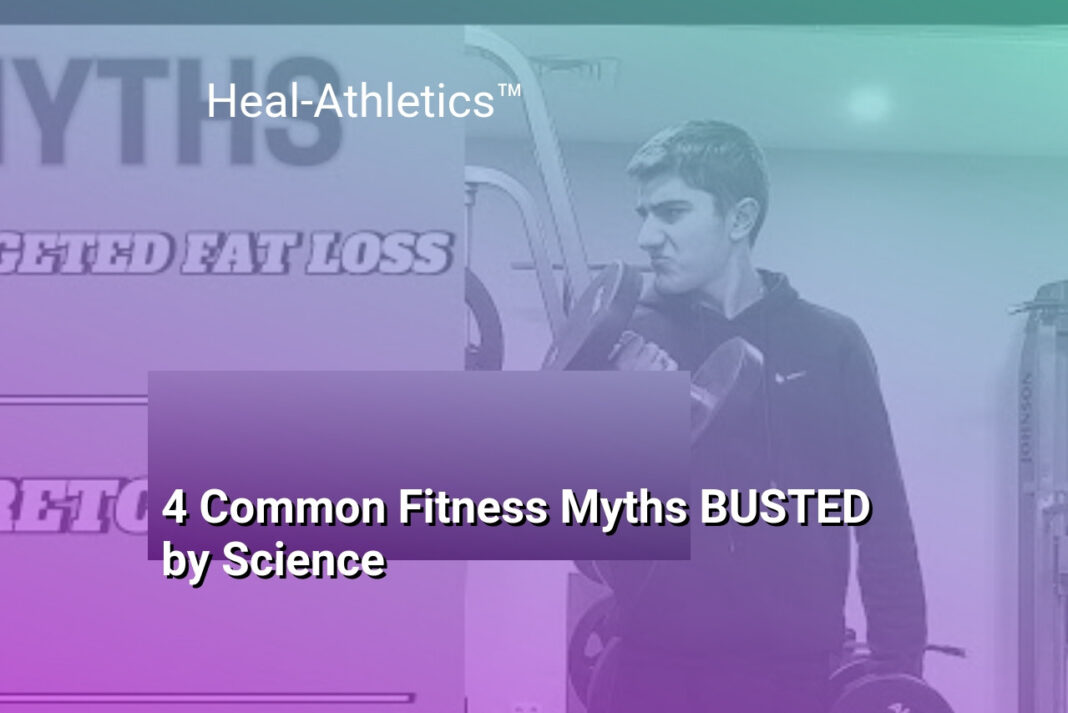The Bottom Line:
Here is a summary of the main points in the requested format:
- I learned that targeted fat loss is a myth and it’s not possible to control where our bodies lose fat through specific exercises. Overall fat loss and muscle building is the key to changing body shape.
- I discovered that stretching during workouts is actually beneficial, contrary to popular belief. Short static stretches between sets can enhance muscle growth, but overstretching should be avoided.
- The video clarified that carbs themselves don’t make you fat; it’s overeating calories that leads to weight gain. Minimally processed carbs are important for health and workout performance.
- I realized that while bulking and cutting can yield faster results, they aren’t the only ways to build muscle and lose fat. Body recomposition is possible by maintaining a positive nitrogen balance through increased protein intake.
- The main theme of the video was debunking common fitness myths using scientific evidence, emphasizing the importance of overall fat loss, balanced nutrition, and a sensible approach to resistance training and stretching for optimal results.
Myth 1: Targeted Fat Loss is Possible
The Myth of Spot Reduction
The idea that you can target fat loss in a specific area of your body, often referred to as “spot reduction,” is a persistent myth in the fitness industry. Despite the countless products and exercises claiming to help you lose belly fat or slim down your thighs, the truth is that targeted fat loss is simply not possible. When you lose fat, it happens throughout your entire body, not just in one specific area.
The Science Behind Fat Loss
Numerous studies have debunked the myth of spot reduction. In one randomized control trial, researchers divided 40 overweight and obese women into two groups: one group followed a diet only, while the other group followed a diet and performed abdominal resistance exercises for 12 weeks. At the end of the study, both groups experienced weight loss, but there was no significant difference in abdominal fat loss between the two groups. This study demonstrates that abdominal exercises do not specifically target abdominal fat loss.
Another meta-analysis published in 2021 examined 13 studies involving more than 1,000 participants. The analysis found that local muscle training had no effect on localized fat loss. In other words, exercising a specific part of the body did not lead to fat reduction in that particular area.
The Key to Changing Your Body Composition
While you can’t control where your body loses fat, you can still achieve the desired changes in your physique by focusing on overall fat loss and muscle building. Engaging in physical activity helps burn fat and preserve muscle mass, which can lead to changes in your body shape over time. Additionally, having a higher muscle mass can boost your metabolic rate, as muscles are more metabolically active than fat. This means that individuals with more muscle mass burn more calories at rest compared to those with a higher fat mass.
To optimize your body composition, aim for a well-rounded fitness routine that includes a combination of cardiovascular exercise and strength training. Consistency and patience are key, as changes in body composition take time. By focusing on overall health and fitness, rather than trying to spot-reduce fat, you’ll be better equipped to achieve your goals and maintain a healthy physique in the long run.
Myth 2: Stretching During Training is Bad
The Benefits of Stretching During Training
Contrary to popular belief, stretching during your workout can actually be beneficial for muscle growth and performance. While it’s true that static stretching, where you hold a stretch for an extended period, can lead to a temporary decrease in strength output and power, incorporating it strategically into your routine can yield positive results.
Research by Brad Schoenfeld has shown that interset stretching, particularly in the soleus muscle of the calf, can elicit greater hypertrophy compared to other muscles like the gastrocnemius. This suggests that stretching between sets of resistance exercise may enhance muscle growth beyond what is achieved with traditional resistance training or isolated stretching alone.
How to Incorporate Stretching During Your Workout
To reap the potential hypertrophic benefits of stretching without impeding your gains, it’s important to keep a few key points in mind. First, the intensity of your stretch shouldn’t be too high. Overstretching to the point of pain can actually decrease hypertrophy. Aim for a comfortable stretch that lasts around 30 seconds.
It’s recommended to stretch after your first set of an exercise, whether it’s a compound or isolation movement. However, avoid stretching between every set of every exercise, as this can be counterproductive. Focus on stretching only after the first set of your first exercise, and then continue with your workout as usual.
The Bottom Line
Incorporating stretching into your training routine can be advantageous for muscle growth and overall performance. By strategically using interset stretching and following proper guidelines, you can potentially enhance your gains without sacrificing strength or power. So, don’t be afraid to stretch during your workouts – just be mindful of how and when you do it for optimal results.
Myth 3: Carbs Are Unhealthy and Make You Fat
The Importance of Carbohydrates for Performance
Carbohydrates are an essential macronutrient that plays a crucial role in fueling your body, especially during short and intense workouts. When you engage in high-intensity exercises, your body primarily relies on carbohydrates for energy. Consuming adequate amounts of carbohydrates before and after your workouts can help optimize your performance, support recovery, and promote muscle growth.
Carbs Don’t Make You Fat, Overeating Does
Contrary to popular belief, carbohydrates themselves do not make you fat. Weight gain occurs when you consume more calories than your body burns, regardless of the macronutrient composition of your diet. Overeating any macronutrient, whether it’s carbohydrates, proteins, or fats, can lead to weight gain if you consistently exceed your caloric needs. The key to maintaining a healthy weight is finding a balance between your calorie intake and expenditure, while focusing on nutrient-dense food sources.
Choosing the Right Carbs for Better Health
When incorporating carbohydrates into your diet, it’s important to choose minimally processed or unprocessed sources for the majority of your nutrition. Whole grains, fruits, vegetables, and legumes are excellent sources of complex carbohydrates that provide essential nutrients, fiber, and sustained energy. These nutrient-dense carbohydrates not only support your fitness goals but also contribute to overall better health by promoting digestive health, reducing inflammation, and supporting a healthy gut microbiome.
Myth 4: Bulking is Required to Build Muscle, Cutting to Lose Fat
Recomposition: Building Muscle and Losing Fat Simultaneously
While the traditional approach to building muscle and losing fat involves separate bulking and cutting phases, it is possible to achieve both goals simultaneously through a process called body recomposition. This approach involves maintaining a slight caloric deficit while consuming adequate protein and engaging in resistance training. By doing so, you can create a positive nitrogen balance, which is essential for muscle growth, while still losing body fat.
Studies have shown that individuals can successfully build muscle and lose fat at the same time, especially those who are new to resistance training or have a higher body fat percentage. In one study, untrained individuals who followed a resistance training program and consumed a high-protein diet were able to gain muscle and lose fat over a 12-week period, despite being in a caloric deficit.
The Role of Protein in Body Recomposition
Protein plays a crucial role in body recomposition, as it is essential for muscle growth and repair. When you consume adequate protein while in a caloric deficit, your body is more likely to preserve lean muscle mass and prioritize fat loss. The recommended protein intake for individuals looking to build muscle and lose fat simultaneously is around 1.6-2.2 grams per kilogram of body weight per day, depending on factors such as age, sex, and activity level.
It is also important to distribute your protein intake evenly throughout the day, consuming protein-rich foods with each meal and snack. This helps to maintain a positive nitrogen balance and support muscle growth and recovery.
The Importance of Resistance Training
Resistance training is another key component of successful body recomposition. By engaging in regular strength training exercises, you can stimulate muscle growth and maintain lean muscle mass while in a caloric deficit. This not only helps to improve your body composition but also boosts your metabolism, as muscle tissue is more metabolically active than fat tissue.
When designing a resistance training program for body recomposition, it is important to focus on compound exercises that target multiple muscle groups, such as squats, deadlifts, bench presses, and rows. These exercises are more effective at stimulating muscle growth and burning calories compared to isolation exercises that target single muscle groups.
In conclusion, while the traditional bulking and cutting approach can be effective for building muscle and losing fat, it is not the only way to achieve these goals. By following a well-designed body recomposition plan that combines a slight caloric deficit, adequate protein intake, and regular resistance training, you can successfully build muscle and lose fat simultaneously, leading to a leaner, stronger physique.
Myth 5: [Insert 5th Fitness Myth from Video]
Stretching During Resistance Training Can Enhance Muscle Growth
Contrary to popular belief, stretching between sets of resistance exercise may actually enhance muscle hypertrophy compared to traditional resistance training or isolated stretching alone. A study by Brad Schoenfeld found that interset stretching elicited greater hypertrophy in the soleus, a type I dominant muscle in the calf that is resistant to fatigue and aids in walking, compared to the gastrocnemius, a mixed fiber muscle.
It has been speculated that performing 30 seconds of static stretching versus passive rest between sets during resistance training may provide a potential hypertrophic benefit, particularly in untrained individuals. However, it’s important to note that the intensity of the stretch should not be too high, as exaggerating the stretch to the point of pain can decrease hypertrophy. Additionally, stretching should be limited to around 30 seconds after the first set of the first exercise, whether it’s a compound or isolated exercise, and should not be overdone in subsequent sets or exercises.
The Key Is to Strike a Balance
While stretching during resistance training can be beneficial, it’s crucial to find the right balance. Overstretching or stretching for too long can hinder your gains and lead to frustration. The key is to incorporate stretching strategically, focusing on the first exercise and avoiding excessive stretching throughout the entire workout.
By incorporating stretching in a controlled and targeted manner, you can potentially enhance muscle growth and improve your overall fitness. The idea that stretching during workouts is detrimental is simply not supported by research. In fact, when done correctly, stretching can be a valuable addition to your resistance training routine.
Debunking the Myth
The myth that stretching should be avoided during resistance training is just that – a myth. Science has shown that strategic stretching can actually be beneficial for muscle hypertrophy. By understanding the proper techniques and timing for incorporating stretching into your workouts, you can optimize your results and achieve your fitness goals more effectively.
Don’t let outdated beliefs hold you back from reaching your full potential. Embrace the power of stretching in your resistance training routine and experience the benefits for yourself. With a balanced approach and a focus on proper form and technique, you can debunk this common fitness myth and take your workouts to the next level.





